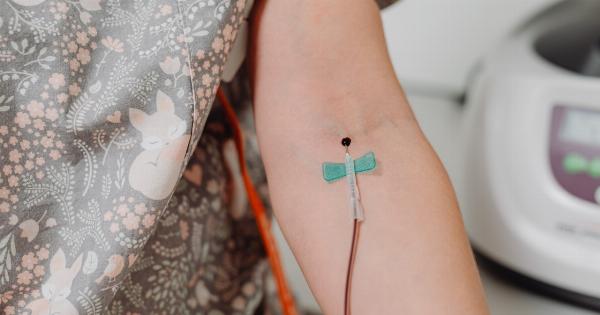Acute venous thrombosis is a serious medical condition that can lead to deep vein thrombosis and pulmonary embolism. It occurs when a blood clot forms in a vein, usually in the legs or pelvis, and obstructs the blood flow.
In recent years, researchers have made significant advances in understanding the causes, diagnosis, and treatment of this condition. Here are some of the latest breakthroughs in acute venous thrombosis research:.
Causes of Acute Venous Thrombosis
Acute venous thrombosis is caused by a combination of factors, including genetic predisposition, environmental factors, and lifestyle choices. Researchers have identified several gene mutations that increase the risk of developing blood clots.
They have also found that certain environmental factors, such as smoking, obesity, and prolonged sitting or standing, can increase the risk of clot formation. In addition, lifestyle choices such as a sedentary lifestyle and a high-fat diet can contribute to the development of acute venous thrombosis.
Diagnosis of Acute Venous Thrombosis
Early diagnosis of acute venous thrombosis is critical to prevent complications such as deep vein thrombosis and pulmonary embolism. Several non-invasive diagnostic tests are available, including ultrasound, D-dimer test, and venography.
Ultrasound is the most commonly used diagnostic test for acute venous thrombosis. It uses sound waves to create images of the veins and detect blood clots. D-dimer test measures the levels of a protein called D-dimer in the blood, which is a marker of clot formation.
Venography is a more invasive test that involves injecting a dye into the veins and taking X-ray images.
Treatment of Acute Venous Thrombosis
The management of acute venous thrombosis involves a combination of anticoagulant therapy, compression stockings, and lifestyle changes.
Anticoagulant therapy, such as heparin and warfarin, is used to prevent further clot formation and reduce the risk of complications. Compression stockings are worn to improve blood flow and prevent the formation of new blood clots. Lifestyle changes, such as regular exercise and a healthy diet, can also help prevent the recurrence of acute venous thrombosis.
New Treatment Options
Researchers are constantly developing new treatment options for acute venous thrombosis. One of the latest breakthroughs in this area is the use of direct oral anticoagulants (DOACs) such as rivaroxaban, apixaban, and edoxaban.
These drugs have been shown to be as effective as traditional anticoagulants such as warfarin but have fewer side effects and do not require regular monitoring. Another promising treatment option is catheter-based thrombolysis, which involves injecting a clot-dissolving agent directly into the clot using a catheter. This procedure can quickly dissolve the clot and restore blood flow in the affected vein.
Prevention of Acute Venous Thrombosis
Prevention is key when it comes to acute venous thrombosis. Several preventive measures can be taken to reduce the risk of developing this condition, including:.
- Regular exercise and physical activity
- Maintaining a healthy weight
- Avoiding prolonged sitting or standing
- Wearing compression stockings
- Quitting smoking
- Following a healthy diet
Conclusion
Acute venous thrombosis is a serious medical condition that requires prompt diagnosis and treatment. Thanks to the latest breakthroughs in research, we now have a better understanding of the causes, diagnosis, and treatment options for this condition.
With continued research and development, we can hope to see even more effective treatments and preventive measures for acute venous thrombosis in the future.



























